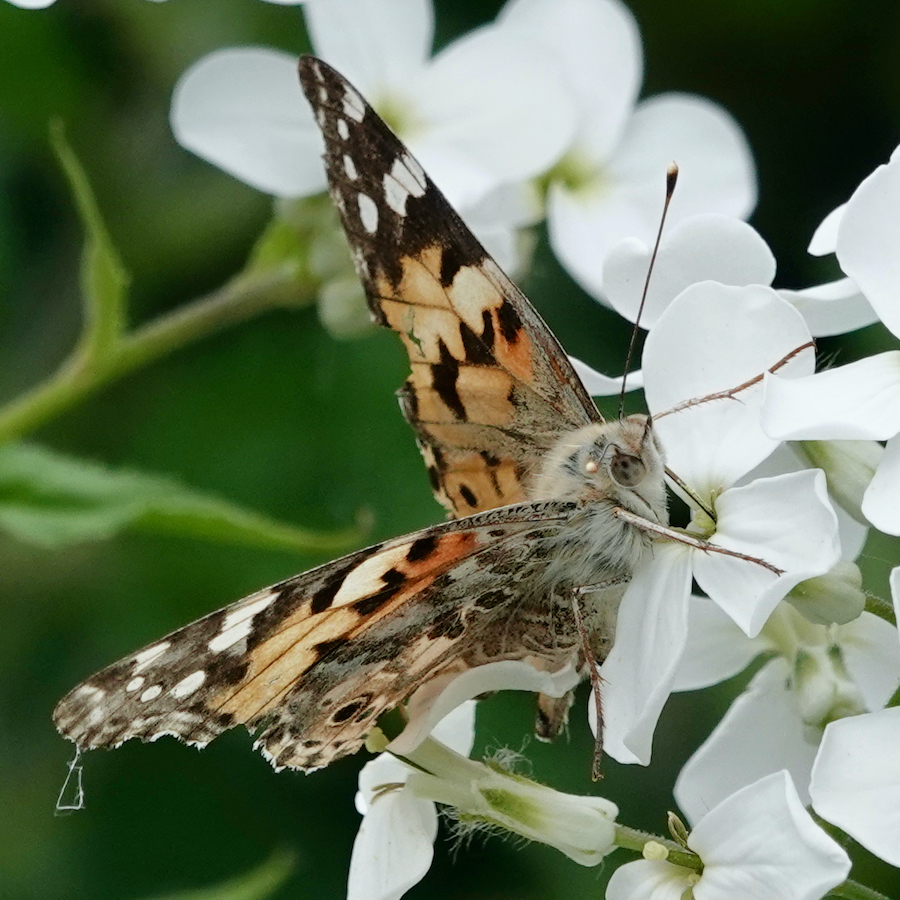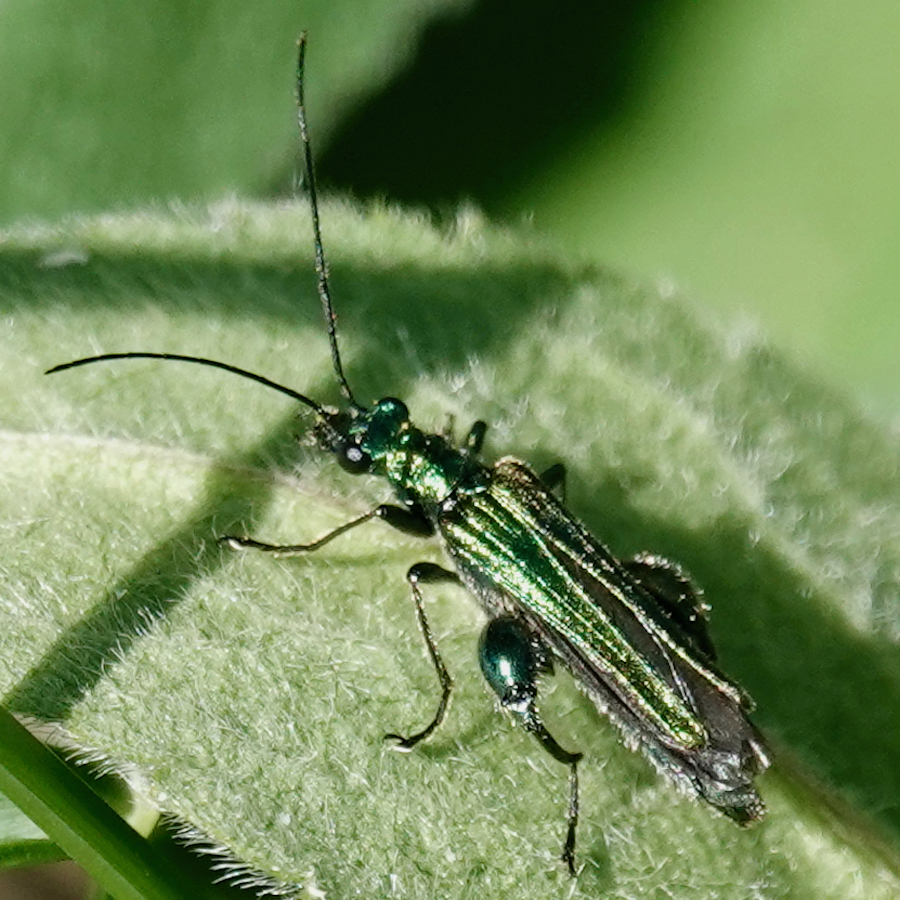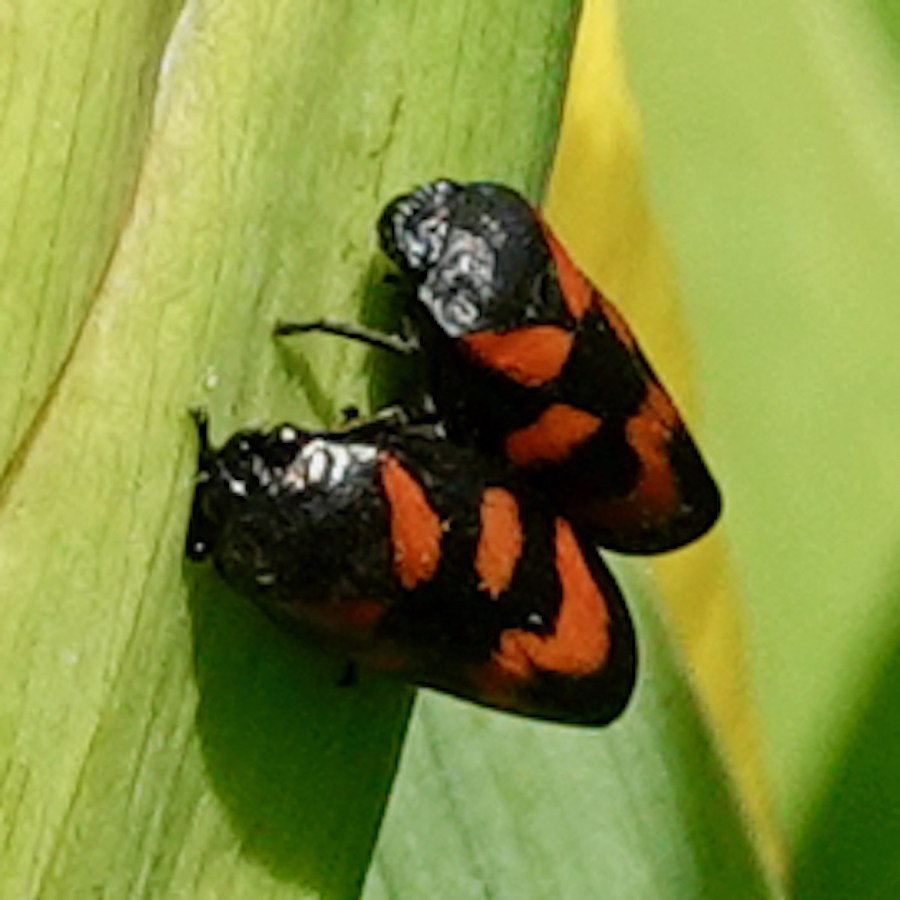We are now getting reasonable numbers of butterflies in the garden. In addition to our usual native species, a migrant Painted Lady showed up last week. These spend the winter around the deserts of North Africa and the Middle East before spreading north to colonise Europe and the British Isles. They are the subject of the most spectacular butterfly migrations seen in this country. They are medium sized butterflies with a wingspan of up to 55mm and a strongly patterned upperwing of black, white and orange. They seem to be around in good numbers already and could show up anywhere through the summer. They can be seen feeding at a wide variety of plants (especially Buddleia) and will lay eggs on thistles, nettles, and many cultivated plants.

The Swollen-thighed Beetle is another species that is commonly seen around this time of year and I noticed the first of these in my garden recently. The males of the species have huge bulges on their hind legs. They are easy to recognise as they are bright metallic green in colour with a coppery sheen; another key feature is that their wing cases to not quite meet in the middle so the membranous wings can be seen. They are small beetles (6-12 mm) that feed on pollen of a wide range of plants, including brambles and daisies, so they are excellent pollinators. Their larvae live inside the stems of thistles so they are rarely seen. They used to be found only in the southern counties of England, but they are now widespread throughout the country.

One other insect that is now around is the Red-and-black Froghopper, a true bug that is unmistakable with its glossy black appearance with red markings on the back. They are most likely to be seen in woods and grassland on the stems of low-growing plants. The young of this species are rarely seen as they feed on the roots of various plants, but the adults are easy to spot feeding by sucking juices from grass and other plants. When it comes to getting around, these froghoppers are multi-talented – they can fly strongly, walk at a leisurely pace or, most spectacularly, leap powerfully into the air as their back legs extend fully in less than a millisecond.

Spring is the ideal time to get out and about and see the remarkable variety of wildlife, whether in your gardens, local footpaths or nature reserves. No special equipment is required, just stroll around keeping an eye on the vegetation and you may be rewarded by the sight of these colourful and interesting animals.
© The Journal 2023